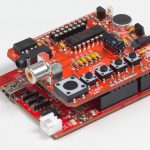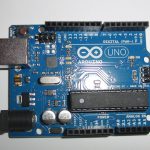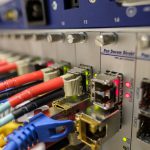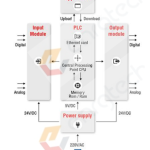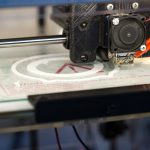
The landscape of IoT protocols is vast and diverse, with various standards, architectures, and frameworks available. The Internet of Things (IoT) is a rapidly growing interconnected devices’ network and systems that exchange data and enable various applications. Various devices in IoT systems depend on communication protocols for exchanging information and proper functionality. Therefore, it is crucial to understand different protocols and their features for developing and designing secure and efficient IoT systems. This article explores the landscape of IoT protocols and their characteristics.
IoT Protocols: A Brief Introduction
IoT protocols refer to communication protocols defining the structure, format, and data exchange rules between the devices in IoT networks. These protocols ensure reliable and secure data transmission and include an IoT protocol list for effective performance and applications. IoT protocols are categorised into two types, including Network Protocols and Application Protocols. Network protocols define the way the devices connect and communicate with each other, while the application protocols specify the format and data exchange structure between devices.
Network Protocols: Used in IoT Systems
In IoT systems, network protocols define connectivity and communication between devices using various standards and architectures. Some of the common network protocols for IoT systems include:
- ZigBee – ZigBee is a low-data-rate and low-power wireless mesh networking standard that operates on the IEEE 802.15.4 standard and is used in industrial control and home automation systems. It is designed for short-range communication.
- Wi-Fi – Wi-Fi is a common industrial and smart home wireless networking technology that provides high-speed data communication over a local area network.
- Bluetooth – Bluetooth is a standard wireless communication protocol that is ideal for enabling communication between devices in a short range. It is widely used in numerous portable consumer electronics, such as smartphones, wearables, and other smart home devices.
- CoAP: CoAP (Constrained Application Protocol) is a lightweight network protocol specifically designed for constrained IoT devices for resource discovery, data transfer, and device management. Examples include sensors and actuators.
- LoRaWAN – LoRaWAN is a long-range wireless communication protocol commonly used in smart city systems, environmental monitoring, and industrial control systems for low-power, low-data-rate applications.
Types of IoT Networks:

IoT networks can be classified into several types based on their range, bandwidth, and power requirements. Some of the most common types of IoT networks include:
- Personal Area Network (PAN): A short-range network used to connect devices within a small and limited area, such as a home or office. Bluetooth and Zigbee are commonly used in PANs.
- Local Area Network (LAN): This network connects devices within a single building or campus. Wi-Fi commonly comes in the category of LANs.
- Wide Area Network (WAN): As the name indicates, this network connects devices over long distances, typically across cities or countries. Cellular networks and satellite connections fall in the WANs category.
- Low-Power Wide-Area Network (LPWAN): A network that provides long-range communication for IoT devices with low power requirements. LoRaWAN and Sigfox are examples of LPWANs.
- Mesh Network: A network where devices communicate with each other rather than through a central hub. Mesh networks suit industrial IoT applications, where devices need to communicate in case the central hub fails.
Application Protocols:
As mentioned earlier, the application protocols for IoT systems define the format and structure of the data exchanged between devices. Some of the common application protocols used in IoT systems include:
- MQTT: MQTT is a lightweight messaging protocol widely used in IoT systems for machine-to-machine communication. It is designed for low-bandwidth and high-latency networks and is commonly used in smart homes, industrial systems, and healthcare.
- HTTP: HTTP is a standard protocol commonly used in web-based applications, IoT systems for user interfaces, and data exchange between devices.
- DDS: DDS is a middleware protocol for real-time data exchange in distributed systems. It is common in industrial control systems, military systems, and healthcare.
Key Characteristics of IoT Protocols:
The landscape of IoT protocols should include certain key characteristics, such as:
- Scalability – IoT systems can have millions of devices connected, and the protocols used must handle the network’s scale and complexity.
- Reliability – IoT systems require reliable communication between devices, and the protocols ensure data is transmitted accurately and securely.
- Low-Power Consumption – Many IoT devices are battery-powered or have limited power. The protocols should be designed to minimise power consumption and extend battery life.
- Security – IoT systems are vulnerable to security threats, and the protocols used must include security features to protect the devices and the data transmitted.
The Bottom Lines:
The landscape of IoT protocol and standard is complex and constantly evolving. Numerous protocols are available for different IoT use cases and applications, and some of the most common IoT protocols include MQTT, CoAP, and HTTP. These protocols enable devices to communicate with each other and the cloud in various ways, such as through wireless networks, cellular networks, and Ethernet. Many IoT devices now use standardised communication protocols such as Zigbee, ensuring inter-operability and simple use. Additionally, as the IoT continues to grow and evolve, the protocols landscape will likely expand and change.






